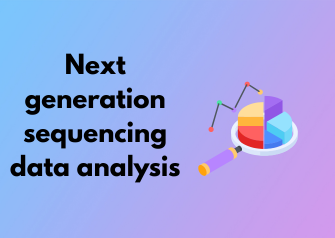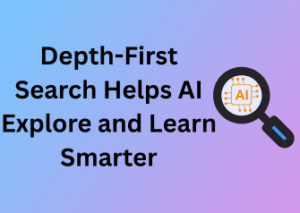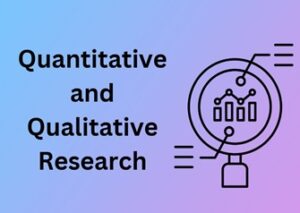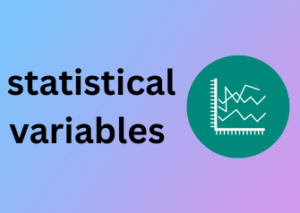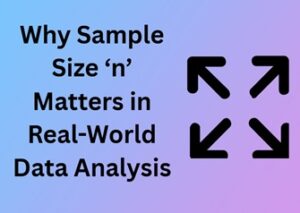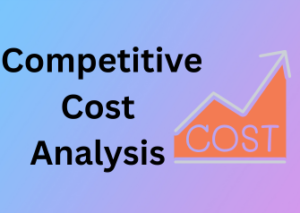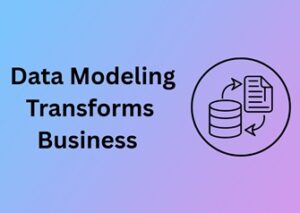The Leap from Old Tech to NGS
Before NGS entered the scene, we depended on methods like Sanger sequencing, which, in its time, was revolutionary. However, it was a slow and costly process, limiting the scope of research. Imagine taking weeks or even months to sequence a small segment of DNA. Frustrating, isn’t it? Enter NGS, which brought with it the ability to sequence entire genomes in a matter of days. This jump in capability isn’t just about speed — it’s about scale and precision.
NGS can analyze millions of fragments of DNA simultaneously in parallel. Picture it as upgrading from reading one page at a time with Sanger sequencing to flipping through an entire book at once with NGS. That’s the magnitude of efficiency we’re talking about here.
Enabling Personalized Medicine
If you’ve heard the buzzword “personalized medicine”, you’ve already caught on to one major way NGS has revolutionized healthcare. With the ability to deep-dive into individual genomes, scientists are now developing tailored treatments for everything from cancer to rare genetic disorders.
- Cancer Genomics: NGS identifies mutations driving specific cancers, enabling targeted therapies for better outcomes.
- Infectious Disease Tracking: Remember how we tracked COVID-19 variants so quickly? That’s NGS in action!
- Rare Disease Diagnosis: Families struggling for answers finally have hope, thanks to this technology’s ability to uncover tiny but significant genetic abnormalities.
Spotlighting Agriculture and Evolutionary Studies
The impact of NGS isn’t confined to human health; it’s transforming fields like agriculture and evolutionary biology too.
In agriculture, NGS allows scientists to explore crop genomes to breed plants that are more resistant to disease, yield higher productivity, and thrive under extreme conditions. Talk about feeding the growing global population intelligently!
Meanwhile, evolutionary biologists are using NGS to decipher ancient genomes. Did you know it was NGS that shed light on Neanderthal DNA in humans? Pretty cool how we can now trace species’ evolutionary paths with such precision, right?
The Critical Steps Before and After Sequencing: Sample to Signal
So, you’re intrigued by the magic of Next Generation Sequencing (NGS) and how it holds the key to decoding life’s blueprint? Well, before those impressive reads and insightful graphs appear, there’s a journey your sample goes through—a journey that starts long before the sequencing stage and continues well after the data is generated. Let’s unpack this fascinating ‘sample-to-signal’ pipeline together!
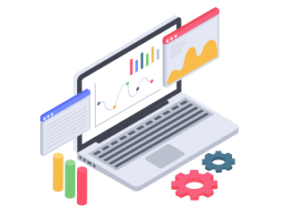
Step 1: Preparing Your Sample (A.K.A. Setting the Stage)
Before any sequencing magic can happen, the spotlight is on sample preparation. Think of this step as dressing up the star before their big premiere. DNA or RNA needs to be isolated and carefully purified from a biological sample such as blood, tissue, or saliva. The goal? Achieving a pristine sample that’s free from contaminants because even a tiny speck of unwanted material can tamper with your downstream results.
This stage also involves library preparation, where the genetic material is fragmented and fitted with adaptors, which allow the sequencing machine to recognize and amplify it. And remember, tailoring this step matters! The right preparation approach (like whether you’re studying whole genomes or targeting specific genes) can impact the outcome significantly.
Step 2: Quality Control is King
If there’s one mantra to live by in the world of NGS, it’s this: garbage in, garbage out. This is why quality control (QC) is such a huge deal. Before diving into sequencing, scientists use tools like bioanalyzers, spectrophotometers, or PCR-based methods to ensure that the starting materials—your DNA or RNA libraries—are up to standard. Healthy DNA looks like a solid structure on a gel or chromatogram, while degraded DNA (aka a researcher’s nightmare) appears like a smudged, broken line.
By catching errors or impurities early on, QC minimizes sequencing failures and ensures that your time, money, and effort don’t go down the drain.
Step 3: The Sequencing Run – The Big Moment
Once your sample is ready and deemed fit, it’s time for sequencing to shine. Platforms like Illumina, Oxford Nanopore, or PacBio transform the prepared sample into digital data—millions (or billions!) of reads representing small fragments of your genome. But let’s not get ahead of ourselves. The machine doesn’t just spit out a neatly organized genome. Instead, what you get is raw data—think of it as an unassembled puzzle.
Step 4: Post-Sequencing Quality Checks
Once the sequencer has done its job, there’s another QC checkpoint—are we noticing a trend here? Post-sequencing checks determine if the run was successful and assess key metrics like sequence quality, coverage depth, and read length. Tools like FastQC generate reports to help researchers catch any sequencing hitches, like low-quality bases or uneven coverage areas.
Step 5: Data Preprocessing – Cleaning Up the Noise
This is where things start to get technical. Preprocessing involves trimming adapter sequences, filtering out low-quality reads, and removing duplicates to ensure your data is pristine and ready for analysis. Think of it as Marie Kondo-ing your dataset: any noise or irrelevant clutter has to go so that only the meaningful data remains.
Step 6: Downstream Analysis – Making Sense of the Signal
After preprocessing, the real data analysis begins. Your beautifully prepped and cleaned dataset is mapped against a reference genome, assembled, or analyzed for specific features like variants or gene expression signatures. It’s like piecing together a jigsaw puzzle or analyzing the patterns in a complex tapestry.
- Alignment: Mapping your sequences to a reference genome.
- Assembly: Stitching fragments together in the absence of a reference.
- Variant analysis: Detecting mutations, SNPs, or structural variations.
The Hidden Challenges in Handling Massive Genomic Datasets
The world of genomics is vast, fascinating, and undeniably powerful. But let’s be honest – working with massive genomic datasets can feel like navigating a maze. These datasets aren’t your average spreadsheets; we’re talking about terabytes of complex information that can push even the most robust computational systems to their limits. Curious to know why these challenges exist and how you can tackle them? Let’s dive in.
1. The Sheer Volume of Data
A single sequencing machine can generate hundreds of gigabytes of data in mere hours. Now, multiply that by hundreds or thousands of sequencing runs for large projects, and suddenly, you’re staring down petabytes of data! This volume isn’t just overwhelming; it demands cutting-edge storage solutions and sophisticated resource planning.
An effective way to mitigate this issue is to integrate cloud computing. Platforms like Amazon Web Services (AWS) or Google Cloud offer scalable storage and analytical power without the need for massive local infrastructure investment. Moving to the cloud might sound daunting, but it pays off in efficiency and long-term cost management.
2. Data Quality: More Isn’t Always Better
Okay, so you have all this data – but is it reliable? Raw sequencing outputs are often riddled with errors due to factors like instrument issues, contamination, or inherent biases in sample preparation. Poor-quality data leads to inaccurate interpretations, making this a top challenge.
The key? Employ rigorous quality control (QC) checks. Tools such as FASTQC and MultiQC excel at flagging issues like low base quality or uneven coverage. Make quality your priority from the get-go; trust us, fixing mistakes downstream is like trying to unburn toast.
3. Computational Resource Bottlenecks
Massive datasets require equally massive computational power to process. Think of steps like data alignment or assembly – they’re computationally intense and easily overwhelm standard workstations. Without adequate resources, you might end up waiting days (or longer!) for results.
A practical solution? Leverage **parallel computing**. High-performance computing (HPC) clusters and GPU-accelerated systems are your best friends here. These systems can handle simultaneous tasks, processing data much faster than traditional methods. If purchasing HPC resources isn’t feasible, consider using cloud platforms that allow you to tap into the horsepower you need without the hefty upfront costs.
4. Data Security and Privacy
Handling genomic data doesn’t just come with technical challenges – it also comes with serious ethical responsibilities. Genomic information contains deeply personal details about individuals, and any breaches can compromise privacy or even lead to misuse of data.
To navigate this minefield, prioritize data encryption and strict access controls. Familiarize yourself with guidelines like the HIPAA (Health Insurance Portability and Accountability Act) to ensure you’re on top of data protection standards, especially when collaborating across borders.
5. **Human Factors: Expertise Matters**
Even the most advanced technology won’t help if the people operating it aren’t prepared. Genomic data analysis requires a blend of domain expertise, bioinformatics skills, and proficiency in computational tools. But let’s not sugarcoat it – there’s a global shortage of bioinformatics professionals, making this a hidden bottleneck.
The ideal strategy is to invest in training. Encourage your team to upskill with courses like those offered by Coursera or edX. Collaborating with universities or research institutes can also open doors for internships and joint projects, ensuring future expertise.
Breaking Down Alignment and Assembly: From Raw Data to Reference
Okay, let’s set the stage a bit. Imagine you’ve just pulled in all this incredible data from your Next Generation Sequencing (NGS) machine. It’s exciting, right? But here’s the catch: what you’re holding isn’t a nice, neat genome. What you’ve got is raw data—a jumble of short DNA fragments, or reads</>, that need to be sorted, aligned, and pieced together to make sense of your experiment. This, my friend, is where alignment and assembly come into play, the backbone of turning sequencing chaos into meaningful results.
What’s the Difference Between Alignment and Assembly?
Let’s demystify this: alignment and assembly are two distinct processes, though they work towards the same goal—making sense of your raw data.
- Alignment: Think of it as matching puzzle pieces. You take your sequencing reads (those tiny DNA snippets) and stack them against a reference genome. The idea here is to figure out where those reads fit within a known genome sequence.
- Assembly: No reference genome to work with? No problem—this is where assembly shines. Assembly pieces those small DNA reads together to create a full-length sequence without relying on any “reference guide.” It’s like trying to assemble a jigsaw puzzle without the picture on the box—hard, but very rewarding when you get it right.
Alignment: The Fast Track When a Reference is Ready
If you’re working with a species that has already been sequenced, alignment is the go-to method. This process uses algorithms like Burrows-Wheeler Aligner (BWA) or Bowtie to quickly compare billions of reads against a known genome. The benefits? Speed and precision. By aligning your reads, you can pinpoint exactly where variations like SNPs (single nucleotide polymorphisms) or insertions occur.
Here’s a tip: always check the quality of your raw reads before jumping into alignment. Tools like FastQC can highlight bad biases or low-quality bases that might throw your results off. Trust me, setting aside time for quality control upfront will save you headaches later.
Assembly: Building Without Instructions
For organisms without a reference genome—say, a novel bacterial strain or a less-studied crop plant—you’re entering the world of de novo assembly. Popular tools like SPAdes or CANU stitch together overlapping reads based on shared sequences, gradually constructing larger fragments called contigs and eventually bigger scaffolds.
The challenge? It’s computationally intensive and prone to errors, especially if your genome has tricky regions like repetitive sequences. You’ll want high coverage (lots of overlapping reads for each region) to boost your assembly’s accuracy. Balance is key—don’t skimp on sequencing depth if you’re looking for high-quality assemblies.
Don’t Just Trust—Verify
Whether you’re aligning or assembling, always validate your results. Tools like QUAST are invaluable for assessing the quality of your assembly, while alignment quality can be double-checked by reviewing metrics like coverage and mapping rates. Aim for high-quality results you can interpret with confidence!
Understanding Variant Calling: What Lies Beneath the Genomic Surface
Let’s dive into the world of variant calling, one of the most fascinating and essential components of genomic data analysis. If you’ve ever wondered how scientists unlock the secrets buried in DNA and identify differences that make each of us unique, this is where the magic happens. Don’t worry, we’ll take it step by step, so it feels less like deciphering a complex code and more like uncovering a treasure map!
What Exactly is Variant Calling?
At its core, variant calling is the process of scanning sequencing data to identify points where the DNA differs from a reference genome. These differences could be as small as a single nucleotide change (known as single nucleotide variants, or SNVs) or larger structural changes, such as insertions, deletions, or duplications. Essentially, variant calling is like being a detective, searching through billions of DNA letters to find the meaningful differences that might influence traits, diseases, or genetic predispositions.
Why is Variant Calling So Important?
Well, think about this: identifying variants can have life-changing impacts. For example:
- In personalized medicine, variant calling helps pinpoint mutations that might make someone more responsive to a specific treatment (or less). It’s like tailoring healthcare to your DNA!
- In rare disease research, finding a single mutation amongst billions of DNA bases could provide the key to understanding a condition affecting a patient.
- For population genetics, tracking these differences helps us understand human evolution, diversity, and migration patterns.
Pretty amazing, right?
From Reads to Variants: What’s Involved?
The process of variant calling is no small task. First, you’ve got your raw data—millions (or billions!) of short DNA fragments, known as reads, from sequencing machines. The ultimate goal is to piece together this genomic jigsaw puzzle and figure out where it differs from the reference genome. Here’s a simplified breakdown of how this happens:
- Read Alignment: The sequencing reads are first mapped to the reference genome, much like putting a puzzle together. Modern tools like BWA or Bowtie2 make this step fast and accurate.
- Error Management: Not all differences in DNA are meaningful; some might just be sequencing errors. Variant calling algorithms sift through the data to separate the signal from the noise.
- Variant Identification: After aligning the reads, algorithms like GATK or freeBayes analyze the data to call variants. This step pinpoints which changes are real and worth examining further.
The Challenges Beneath the Surface
Let’s not sugarcoat it: variant calling isn’t always smooth sailing. Several pitfalls can arise:
- Low Coverage: If some regions of the genome aren’t well-represented in the sequencing data, it’s hard to confidently call variants there.
- Complex Regions: Some parts of the genome, like repetitive sequences, are tricky to align reads to accurately. This makes calling variants in these regions especially challenging.
- Data Volume: Working with massive datasets requires robust computational power and sophisticated pipelines—something that can slow down even the most seasoned bioinformaticians.
How Can You Master Variant Calling?
If you’re stepping into this exciting field, here’s some friendly advice:
- Start with a solid understanding of sequencing data quality. Garbage in, garbage out—make sure your data is clean before diving into variant calling.
- Familiarize yourself with popular tools like GATK or SAMtools. Most have great tutorials to help you get started.
- Don’t forget to validate your results! Variants that seem significant computationally still need experimental verification to ensure their relevance.
The Role of AI in Streamlining Post-Sequencing Interpretation
If you’ve ever marveled at how modern technology untangles complex puzzles, then you’ll absolutely appreciate the role artificial intelligence (AI) plays in the post-sequencing analysis of genomic data. AI isn’t just a buzzword here—it’s a game-changer, simplifying processes that once took researchers weeks or even months! Let’s dive into how AI is not only easing the journey of interpreting sequencing data but also pushing the boundaries of what we can achieve in genomics.
Why Is Post-Sequencing Interpretation So Challenging?
Before we get into AI’s contribution, it helps to understand the challenge. After sequencing, we’re often left with mind-bogglingly huge datasets. Think terabytes—yes, terabytes—of raw data filled with base sequences that tell a genomic story. However, hidden within this sea of As, Ts, Cs, and Gs are important variations, mutations, and patterns that matter for research, medicine, and biodiversity conservation. The sheer scale of this data, combined with the complexity of extracting meaningful insights, makes manual interpretation nearly impossible. Enter AI: the helper, the analyst, and dare I say, the hero of the hour.
How AI Simplifies and Speeds Up Genomic Analysis
AI shines by automating tasks that would otherwise be painstakingly slow and error-prone. Let’s explore a few key ways it transforms post-sequencing interpretation:
- Pattern Recognition: AI thrives on pattern recognition. It can sift through genomic data to identify variations, such as single nucleotide polymorphisms (SNPs) or structural variations, that may indicate diseases or unique traits.
- Reducing Noise: Next-generation sequencing often generates “noise” or irrelevant data. Machine learning algorithms are fantastic at cleaning this up, ensuring that the most reliable and useful signals stand out.
- Functional Analysis: AI tools can predict the functional implications of genetic variations. For example, is a particular mutation likely to cause a disease? AI helps researchers prioritize which variations to investigate further.
- Streamlined Annotation: Annotating genetic sequences to link them with known genes, pathways, or diseases is a huge task. AI significantly speeds up this process by comparing data with vast genomic databases.
The Role of Deep Learning
You’ve likely heard of deep learning—it’s a subset of AI that uses neural networks to mimic the way our brains process information. Deep learning is at the forefront of transforming genomic analysis. These smart algorithms learn from massive datasets to make decisions, meaning they get better and better at identifying key genomic features over time.
For example, deep learning tools can predict whether a genetic variant is benign or pathogenic with remarkable accuracy. This becomes especially important in areas like cancer research, where identifying specific mutations can guide personalized treatments. In other words, AI doesn’t just save time; it saves lives.
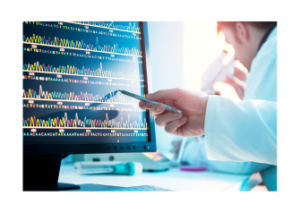
Challenges in Integrating AI
Of course, it’s not all smooth sailing! Integrating AI into genomic research still comes with hurdles:
- Data Privacy: Genomic data is sensitive, and protecting patient privacy is critical.
- Bias in Algorithms: AI models are only as good as the data they’re trained on, which means they can inadvertently reflect biases in the training data.
- Interpretability: Sometimes, even researchers struggle to understand why a deep learning model made a particular decision. This lack of transparency can make adoption tricky.
Future Trends in Sequencing Data and Their Practical Implications
The world of next-generation sequencing (NGS) is evolving at an incredible pace, and the transformation shows no signs of slowing down. With advancements emerging faster than ever before, the future of sequencing data holds immense potential. But what does that future really look like, and how might it shape research, medicine, and how we view the genome? Let’s dig into some exciting trends and their practical implications, using plain language to help understand what lies ahead. Ready? Let’s go!
1. Bigger Data, Smarter Tools
First, let’s talk about the size of data. The amount of genomic data generated by NGS is nothing short of astronomical—and it’s only getting bigger. Think about this: sequencing technologies are becoming faster and less expensive, leading to an exponential increase in data volume. But here’s the challenge: storing and analyzing all this data is no small task. This is why the future will rely heavily on cloud computing, data compression, and smarter algorithms.
- Practical example: Researchers won’t spend as much time managing storage or computing power; instead, they’ll focus on interpreting results with the help of automated pipelines and AI tools.
- Look out for: Seamless systems that can practically “predict” the data you need to analyze next.
2. The Rise of Real-Time Sequencing
Imagine getting sequencing results almost instantly. Sounds like something out of science fiction, right? Well, not for long! One of the biggest trends in NGS is the development of real-time sequencing platforms. These systems allow for live processing of the data as it’s generated. Picture a scenario where doctors can make on-the-spot decisions about a patient’s treatment based on their unique genetic profile.
- Practical example: A patient with a bacterial infection could have their genome sequenced in hours, giving doctors precise information about the best antibiotic to use, all in real-time.
- Look out for: Miniaturized sequencing devices, possibly even portable enough to carry into remote areas or space expeditions. The future is wild!
3. Sequencing at Scale: Population-Level Genomics
Here’s another big concept: population-level sequencing. Translation? Sequencing entire populations of people rather than individuals. Governments and researchers are already launching major initiatives to understand how genes influence health and disease at scale. But the implications? Massive.
- Practical example: Healthcare systems could create databases that predict disease outbreaks, personalize treatments, and even streamline preventative care based entirely on the genetic makeup of their population.
- Look out for: More discussions about ethics and privacy as larger datasets include sensitive genomic information.
4. Personalized Everything: Medicine to Nutrition
One of the most exciting trends is the shift towards personalized genomics. By leveraging sequencing data, individuals can receive tailored advice on treatments, fitness plans, diet, and even skincare. Think of it like having a roadmap for your body.
- Practical example: A future where your meal plan is designed based on your DNA, optimizing nutrient intake while reducing any genetic predisposition to certain diseases.
- Look out for: Direct-to-consumer genetic testing kits becoming more advanced, merging medical-grade insights with personal convenience.
5. Ethical and Practical Considerations
Of course, with great power comes great responsibility, right? As sequencing gets faster, cheaper, and more widely used, we’re going to face important questions: Who owns your genomic data? How do we ensure privacy? Are these enormous discoveries being used ethically? The future isn’t just about fancy tech—it’s also about having frameworks in place to protect people.
- Practical example: Stricter regulations might emerge to prevent misuse of genomic information (e.g., by insurance companies).
- Look out for: Innovations like blockchain being used to secure genomic datasets, adding an extra layer of trust.

